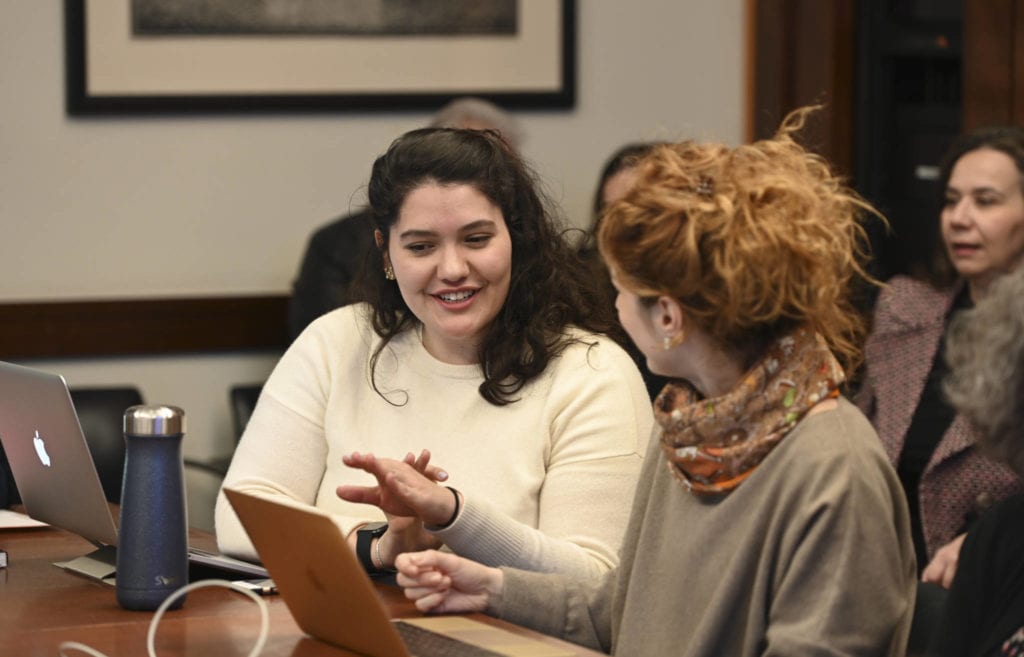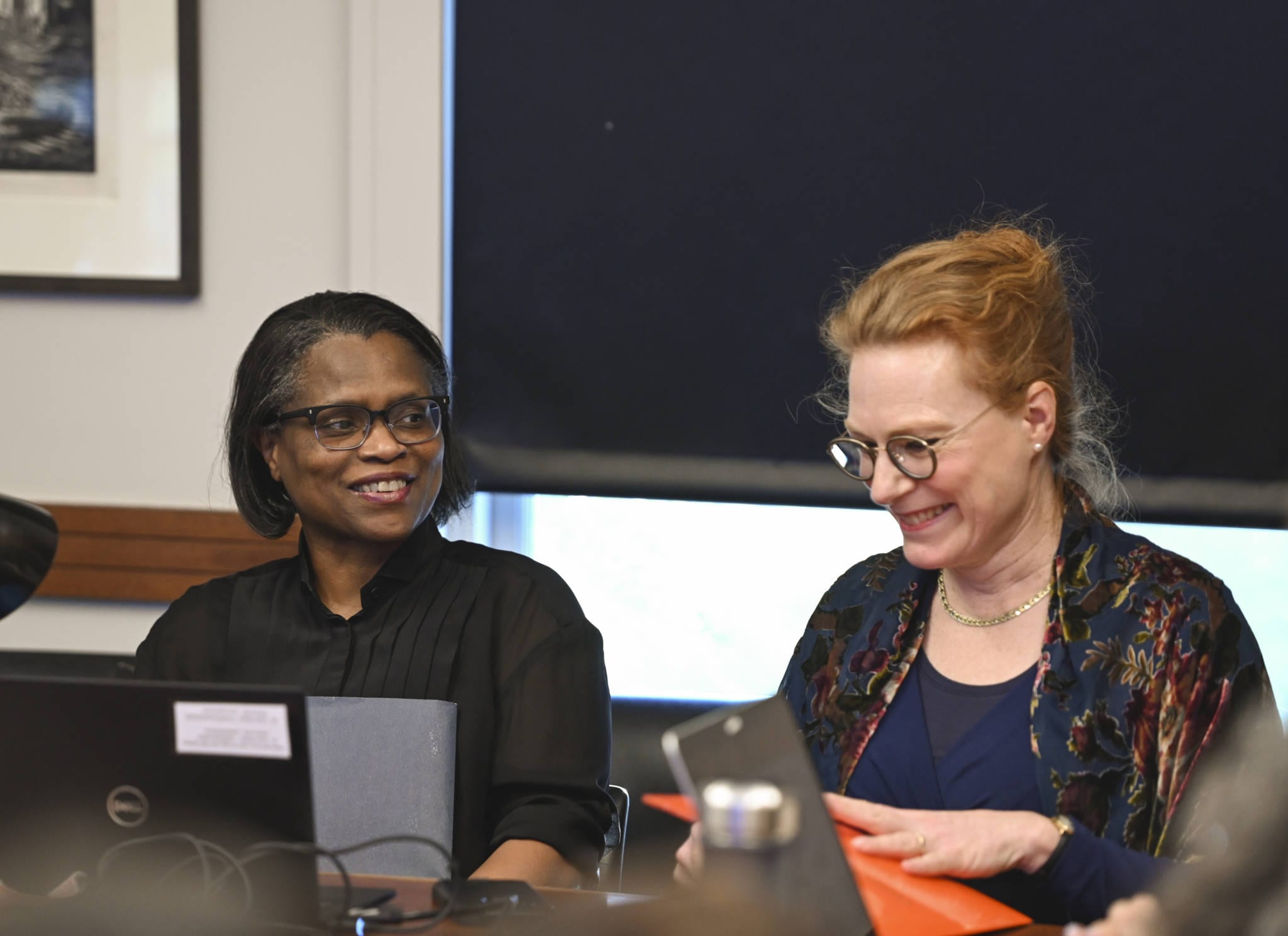By Alyssa Cady and Erene Morcos
On March 4, 2020, Thelma K. Thomas, Professor of Fine Arts at New York University’s Institute of Fine Arts delivered the Stewart Lecture entitled “Monastic Lessons in Cloth from Late Antique Egypt: Worn, Embodied, and Remembered.” In the talk hosted by the Committee for the Study of Late Antiquity, Thomas discussed monastic dress and early Christian mnemonic uses of cloth within the context of Late Antique Egypt and the nascency of monasticism.
Thomas began by recounting a poignant personal mother/child experience shared over a simple washcloth to both translate and signal the high emotional stakes of investiture. A later chance rediscovery of the same cloth in a linen closet directly evoked the memory of that childhood experience. This introduction served as an illustration of how memory can imprint itself onto textile and established the foundation of the discussion on the contemplative use of clothing unique to monasticism.
Guided by sources such as the Vita S. Antoni, Thomas referenced the frescos of Chapel LVI of Apa Apollo at Bawit, a monastery founded at the end of the fourth century, to indicate how anachronistic clothing motifs might demonstrate both narratives and relationships. These paintings unfortunately disintegrated soon after their discovery but were nonetheless well-documented. Thomas supplemented her readings of the Apa Apollo standing figures with portraits from the northern lobe of the triconch apse at the Red Monastery near Sohag. Together the images from these two sites acted as important illustrations to contemporary literary sources that discussed the inheritance of garments and how wearing these allowed one to assume or “put on” the characters of their original owners or speak “as” them. Rather than emulation, the transformative power of the habit made it an agent of “becoming.” For the monastic beholder, textile offered a multifaceted sensory experience that had potential for a “continuous unfolding of meaning.”

Thomas’ analysis demonstrated how the habit became the identifier of the corporate body of monasticism. She explained that when one monk would look at his brother, he would have seen himself. Accordingly, a garment could constitute a totality of a person and come to incorporate their memory. This concept is important to our understanding of figural representation in medieval art as a diagrammatic visual idiom, and it is difficult to draw the line between where clothing ended and individual began. Thomas’ lecture thus indicated the importance of dress as signifier. Given that textile is one of the most delicate media and that the majority of the little that survives comes to us in fragments, this lecture also effected a profound materialization of a medium central to Late Antique visual culture but with extraordinarily limited physical evidence today.
















